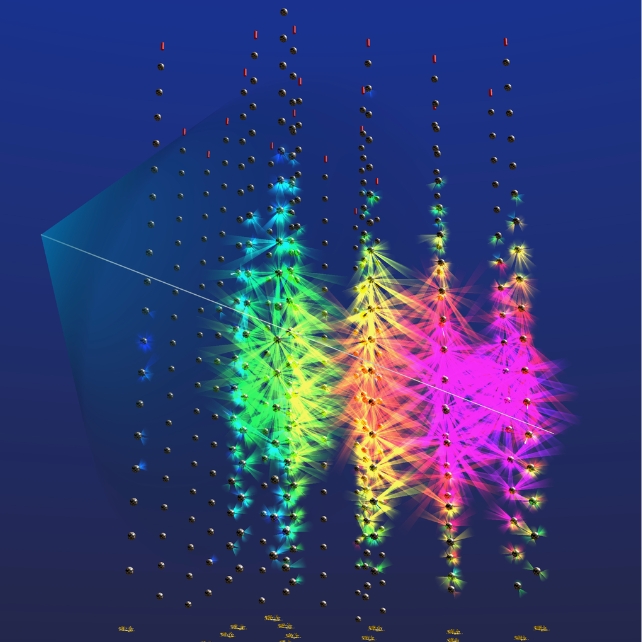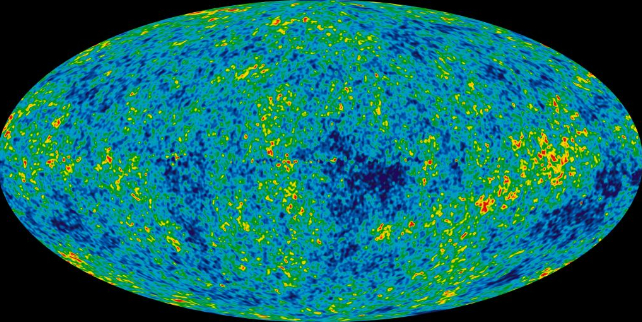The verdict is in. The detection of a cosmic neutrino that smashed into Earth with an unprecedented energy level is not a glitch or an error, but a real detection of a real particle.
In February 2023, a detector called KM3NeT, located deep under the Mediterranean Sea, picked up a signal that seemed to indicate a neutrino with a record-shattering energy of 220 petaelectronvolts (PeV). For reference, the previous record was a mere 10 PeV.
Now, an exhaustive analysis of all the data on and around the event, designated KM3-230213A, not only supports the conclusions that the signal was caused by a 220-PeV neutrino, but adds to the mystery about where the heck in the Universe it came from.
Related: For The First Time, We’ve Detected a ‘Ghost Particle’ Coming From a Shredded Star
“The patterns of light detected for KM3-230213A show a clear match to what is expected from a relativistic particle crossing the detector, most likely a muon, ruling out the possibility of a glitch,” the KM3NeT Collaboration told ScienceAlert.
“Thanks to the reconstructed energy and direction of this muon, the most likely scenario by far is that the muon originated in the interaction of an astrophysical neutrino in proximity to the detector, making it the most natural explanation.”
 frameborder=”0″ allow=”accelerometer; autoplay; clipboard-write; encrypted-media; gyroscope; picture-in-picture; web-share” referrerpolicy=”strict-origin-when-cross-origin” allowfullscreen>
frameborder=”0″ allow=”accelerometer; autoplay; clipboard-write; encrypted-media; gyroscope; picture-in-picture; web-share” referrerpolicy=”strict-origin-when-cross-origin” allowfullscreen>Neutrinos are shockingly common in the Universe – among the most abundant particles out there, generated by energetic circumstances, like stellar fusion, or supernova explosions. But they have no electric charge, their mass is almost zero, and they barely interact with other particles they encounter.
Hundreds of billions of neutrinos are streaming through your body right now, just passing on through like ghosts. That’s why they’re affectionately known as ghost particles.
This avoidant particle personality poses something of a problem: it makes neutrinos almost impossible to detect. Every now and again, however, a neutrino smacks into another particle, an event that creates a small shower of particles such as muons and photons – particles of light. This means a very faint glow that the right detector can pick up.
KM3NeT is just such a detector array. It’s submerged 3,450 meters (11,320 feet) under the surface of the ocean, a depth at which no sunlight can penetrate. In such complete darkness, neutrino events shine like tiny beacons.

This is what led to the detection of KM3-230213A – you can read about that here – but since other detectors operating far longer have come nowhere close to such a high energy detection, some uncertainty remained.
“Given that other experiments, IceCube and Auger in particular, have been operating for more than a decade and have previously performed searches for ultra-high-energy neutrinos but have not detected one so far, we investigate the probability that the neutrino observed by KM3NeT is the first such neutrino observed,” the KM3Net collaboration explained.
“We find that, despite a rather low probability of happening – approximately 1 in 100 chance – it is possible that the only event seen so far is in KM3NeT and not in IceCube and Pierre Auger; therefore, the three measurements do not disagree.”

The researchers also investigated how KM3-230213A fits into the bigger neutrino picture – how many neutrinos are streaming through the Universe, and the distribution of energies. The addition of the 220-PeV neutrino results in more consistent predictions of neutrino behavior.
Finally, and perhaps most interestingly, the paper examined whether KM3-230213A suggests the presence of a new component or process that produces ultra-high-energy neutrinos, compared to the relatively known processes behind the rest of the neutrinos detected to date.
“This is relevant because it is expected that such a new component would arise at ultra-high energies, due to ‘cosmogenic neutrinos‘, which are neutrinos produced by the interaction of cosmic rays with the cosmic microwave background, the first observable light of the Universe emitted about 13.8 billion years ago,” the Collaboration said.
“Alternatively, a new component could be due to a new population of astrophysical objects emitting ultra-high-energy neutrinos.”

Alas, the analysis was unable to determine whether there’s a new component or not. Possible origins of the neutrino still include ejection from the extreme environment of a galactic center, the gamma-ray bursts emitted by exploding stars, or an interaction with the cosmic microwave background.
One thing that scientists do think, though, is that it’s very, very unlikely that the neutrino originated within the Milky Way galaxy. So wherever it’s from, KM3-230213A was born somewhere extreme and very distant. Work is currently underway to try and refine the neutrino’s trajectory, to hopefully come closer to tracing its origin point. So we’re far from hearing the last from KM3-230213A.
“KM3-230213A opened a new window on ultra-high-energy neutrino astronomy,” the Collaboration said.
“Our analysis is the first effort to combine the observations of multiple telescopes over a wide energy range to characterize the ultra-high-energy spectrum. This represents our best chance to gain knowledge on the most extreme objects that populate our Universe.”
The paper has been published in Physical Review X.
Source link


